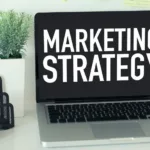
In today’s digital-first world, your website is often the first point of contact between your business and potential customers. A well-designed website isn’t just about aesthetics; it’s a powerful tool that can significantly boost your conversions. Whether you’re working with a skilled web designer or partnering with a marketing agency, the right design strategies can transform your website into a conversion-generating machine.
In this comprehensive guide, we’ll explore how modern website design, coupled with UX/UI best practices, can help you increase website conversions. We’ll also dive into the latest web design trends 2025, discuss responsive web design, and provide actionable tips like website speed optimization and mobile-first website design. By the end, you’ll have a clear understanding of how to leverage your website to drive results.
Why Website Design Matters for Conversions
Your website is more than just a digital brochure—it’s a reflection of your brand and a critical component of your marketing strategy. A poorly designed website can drive potential customers away, while a well-designed one can engage visitors and guide them toward taking action. The Role of a Web Designer in Boosting Conversions A professional web designer understands the nuances of creating a website that not only looks great but also performs well. They focus on: User Experience (UX): Ensuring your website is easy to navigate and intuitive. User Interface (UI): Designing visually appealing layouts that align with your brand. Conversion Rate Optimization (CRO): Implementing strategies to turn visitors into customers. When you collaborate with a marketing agency, you gain access to a team of experts who can integrate design with broader marketing strategies, ensuring your website aligns with your business goals.
Key Elements of a High-Converting Website
1. Modern Website Design Ideas
Staying ahead of the curve is essential in the ever-evolving world of web design. Some modern website design ideas to consider include:
- Minimalist Design: Clean layouts with ample white space to reduce clutter and improve focus.
- Bold Typography: Eye-catching fonts that grab attention and convey your brand’s personality.
- Interactive Elements: Features like animations, hover effects, and micro-interactions to engage users.
2. Responsive Web Design
With over 50% of web traffic coming from mobile devices, a mobile-first website design approach is no longer optional. Responsive web design ensures your website looks and functions flawlessly across all devices, from desktops to smartphones.
3. Website Speed Optimization Tips
Slow-loading websites are a major turnoff for users. According to Google, 53% of mobile users abandon a site if it takes longer than 3 seconds to load. Here are some website speed optimization tips:
- Compress images and videos without sacrificing quality.
- Use a Content Delivery Network (CDN) to reduce server load.
- Minimize HTTP requests and leverage browser caching.
4. UX/UI Best Practices
A seamless user experience is critical for conversions. Follow these UX/UI best practices:
- Use clear and concise calls-to-action (CTAs).
- Ensure intuitive navigation with a well-structured menu.
- Prioritize accessibility by using alt text for images and ensuring color contrast.
The Latest Web Design Trends 2025
Staying updated with the latest trends can give your website a competitive edge. Here are some web design trends 2025 to watch out for:
- AI-Powered Personalization: Tailoring user experiences based on behavior and preferences.
- Dark Mode Design: Offering a dark mode option for reduced eye strain and improved readability.
- 3D Elements: Incorporating 3D graphics and animations for a more immersive experience.
- Voice Search Optimization: Designing websites to accommodate voice search queries.
How to Increase Website Conversions
1. Optimize Your CTAs
Your calls-to-action (CTAs) are the gateway to conversions. Ensure they are:
- Visually prominent and easy to find.
- Action-oriented with clear, compelling text (e.g., “Get Started Today” or “Download Now”).
- Placed strategically throughout your website.
2. Leverage Social Proof
Testimonials, reviews, and case studies can build trust and encourage conversions. Display them prominently on your homepage and product pages.
3. Simplify the Checkout Process
A complicated checkout process can lead to cart abandonment. Streamline the process by:
- Reducing the number of steps required to complete a purchase.
- Offering guest checkout options.
- Providing multiple payment methods.
4. A/B Testing
Experiment with different design elements, CTAs, and layouts to see what resonates best with your audience. A/B testing can provide valuable insights into what drives conversions.
Choosing the Best CMS for Small Business
Your Content Management System (CMS) plays a crucial role in your website’s performance. When selecting the best CMS for small business, consider factors like ease of use, scalability, and customization options. Popular options include:
- WordPress: Highly customizable with a vast library of plugins.
- Wix: User-friendly with drag-and-drop functionality.
- Squarespace: Ideal for visually-driven websites with stunning templates.
Web Design Cost Breakdown
Understanding the web design cost breakdown can help you budget effectively. Costs can vary depending on factors like:
- Complexity of Design: Custom designs are more expensive than template-based ones.
- Functionality: Advanced features like e-commerce integration or membership portals will increase costs.
- Agency vs. Freelancer: Working with a marketing agency may cost more but often provides a more comprehensive service.
Website Redesign Checklist
If your website isn’t performing as well as you’d like, it might be time for a redesign. Use this website redesign checklist to guide the process:
- Audit Your Current Website: Identify pain points and areas for improvement.
- Set Clear Goals: Define what you want to achieve with the redesign (e.g., higher conversions, better user experience).
- Research Competitors: Analyze what’s working for others in your industry.
- Focus on Mobile-First Design: Ensure your new design is optimized for mobile users.
- Test and Iterate: Continuously test your new design and make adjustments as needed.
Conclusion
A well-designed website is a cornerstone of digital success. By partnering with a skilled web designer or a reputable marketing agency, you can create a website that not only looks stunning but also drives conversions. From embracing modern website design ideas to implementing UX/UI best practices, every detail matters.
Stay ahead of the curve by keeping an eye on web design trends 2025, optimizing for speed and mobile users, and continuously refining your strategy. With the right approach, your website can become a powerful tool for growing your business and achieving your goals.
Ready to take your website to the next level? Contact SiteMakerLab today to learn how our expert team can help you design a high-converting website tailored to your unique needs.
By following this guide and implementing the strategies outlined, you’ll be well on your way to creating a website that not only ranks high in SERPs but also delivers measurable results. Whether you’re starting from scratch or planning a redesign, remember that a well-designed website is an investment in your business’s future.


Add comment